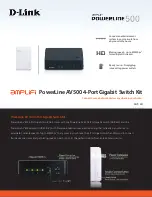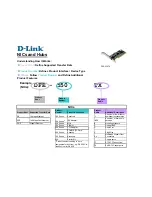
To delete an uplink-state group, enter the
no downstream interface
command.
Parameters
interface
Enter one of the following interface types:
•
10 Gigabit Ethernet:
tengigabitethernet {
slot/port
/subport |
slot/
port/subport-range
}
•
40-Gigabit Ethernet:
fortyGigE
{
slot/port
}
•
Port channel:
port-channel {
1–128
|
port-channel-range
}
•
For a 25-Gigabit interface, enter the keyword
twentyfiveGigE
then the slot/port/
subport information.
•
For a 50-Gigabit interface, enter the keyword
fiftyGigE
then the slot/port/
subport information.
•
For a 100-Gigabit interface, enter the keyword
hundredGigE
then the slot/port/
subport information.
Where
port-range
and
port-channel-range
specify a range of ports separated
by a dash (-) and/or individual ports/port channels in any order; for example:
gigabitethernet 1/1-2,5,9,11-12 port-channel 1-3,5
. A comma is
required to separate each port and port-range entry.
Defaults
none
Command Modes
UPLINK-STATE-GROUP
Command History
This guide is platform-specific. For command information about other platforms, see the relevant
Dell Networking
OS Command Line Reference Guide
.
Version
Description
9.10.0.2
Introduced on the Z9100–ON.
9.8(0.0P5)
Introduced on the S4048-ON.
9.8(0.0P2)
Introduced on the S3048-ON.
9.2(1.0)
Introduced on the Z9500.
9.2(0.0)
Introduced on the M I/O Aggregator. This command is supported in Programmable-Mux
(PMUX) mode only.
8.3.19.0
Introduced on the S4820T.
8.3.12.0
Introduced on the S4810.
8.4.2.3
Introduced on the S-Series S50.
Usage Information
You can assign physical port or port-channel interfaces to an uplink-state group.
You can assign an interface to only one uplink-state group. Configure each interface assigned to an uplink-state
group as either an upstream or downstream interface, but not both.
You can assign individual member ports of a port channel to the group. An uplink-state group can contain either the
member ports of a port channel or the port channel itself, but not both.
Related Commands
•
— assigns a port or port-channel to the uplink-state group as an upstream interface.
•
— creates an uplink-state group and enables the tracking of upstream links.
1620
Uplink Failure Detection (UFD)
















































